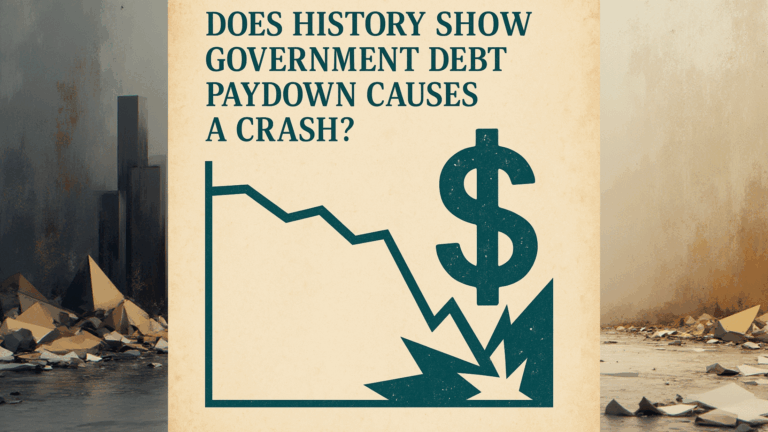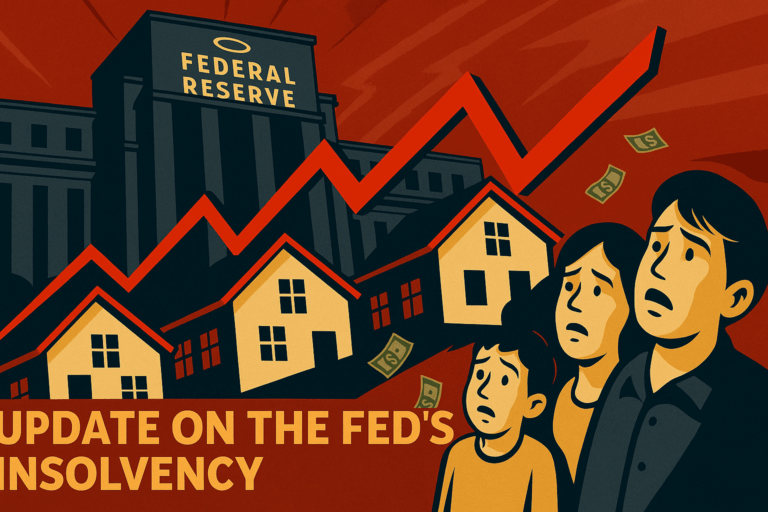I recently appeared on the Prescribing Prosperity podcast to discuss the Great Depression. (We had such a comprehensive discussion that they broke it up into two episodes: one and two.) In the present blog post I’ll summarize some of the key points we raised, to act as a teaser to prompt you to click the links and watch the full conversation.
In the first place, what caused the Great Depression? It is common to blame “unregulated capitalism,” and in particular margin trading on stocks in the bubbly days of the Roaring Twenties. Similarly, school children are typically taught that once the 1929 crash occurred, Herbert Hoover “did nothing” which allowed the downturn to fester into the worst economic debacle in US history.
But there’s something odd in these explanations. Whatever the lack of government regulation and/or helpful intervention prevailing from (say) 1928-1931, it wasn’t the case that there was more government steering of the economy in prior depressions (or “panics” as they sometimes described them). As I’ve often said: Blaming the Great Depression on a lack of government is like blaming a plane crash on gravity.
A much better explanation, in my opinion, comes from the Austrian School economists. They point to the loose monetary policy of the Federal Reserve, particularly after 1926, which helped inflate a stock market and real estate bubble by 1929.
Now boom-bust cycles were nothing new to the American economy, going back at least to the Panic of 1819. But in previous cycles, prices—and particularly, wages—were allowed to fall after the bubble popped. This allowed labor markets to clear after a short depression (with a small “d”), and people could return to work.
Tragically, this natural mechanism did not occur after the 1929 crash. Contrary to popular legend, Herbert Hoover called in the leaders of business and labor and urged them not to cut wage rates. Hoover subscribed to a (faulty) economic theory that claimed falling wages contributed to a downward spiral. Because of his urging (along with other incentives besides his words), Hoover achieved his objective: nominal wage rates were far more rigid during 1929-1931 than they had been during the 1920-21 depression following the wartime boom.
Far from nipping an economic downturn in the bud, Hoover’s high-wage policy led to disaster. As the public scrambled to take their money out of banks, thereby shrinking the overall stock of money (because of the mechanics of fractional reserve banking), the prices of goods and services fell sharply. But hourly wage rates were “sticky” and resistant to downward pressure. This meant that workers became increasingly more expensive as the Depression continued, which helps explain why unemployment reached a shocking 25 percent by 1932.
Another element of Depression history we discuss is the Roosevelt Administration’s deliberate destruction of crops, during a period when many jobless Americans were on the verge of starvation. The New Deal notion was to restrict output and thereby raise prices for farmers. Ultimately the “solution” was to pay farmers to not grow crops, which is perverse enough. Yet at the start, in order to reduce the quantity of farm products already harvested, the government literally slaughtered animals and burned crops:
From the start the Agricultural Adjustment Act was controversial. Apart from the greater governmental intervention it brought to agriculture, it faced a wave of bad optics in its first year. By the time the AAA passed in May 1933 planting had already occurred in the South and around 10 million acres of cotton crops had to be plowed up along with other crops. Even worse was the reduction of livestock herds. In 1933 baby pigs, pregnant sows, and cattle were slaughtered to reduce herds as part of the program. In the end, it is believed around six million hogs were slaughtered. A great number of slaughtered animals ended up being buried in massive pits, but some of the meat from these reductions was purchased and packed by the government for distribution through relief programs. At a time when Americans all over were struggling with hunger, the purposeful slaughter of animals and destruction of crops was a public relations disaster. (“Agriculture’s New Deal”)
In his famous Grapes of Wrath, John Steinbeck has a scene deploring a farmer’s destruction of oranges in order to raise prices, while locals were starving. Steinbeck makes it appear as if the greed of capitalism is at fault. But it wouldn’t make sense for any individual farmer to destroy his own harvest in order to raise prices, because he would be eliminating his own stockpile while raising the price for all of his competitors. In contrast, if the government forces all of the farmers to destroy some of their own crops to raise prices, then that could conceivably boost the incomes of all farmers (while still hurting consumers).
Finally, we have the myth that “World War II ended the Great Depression.” For one thing, it’s ironic that right-wing conservatives, in their zeal to deny FDR credit, will often advance this claim. But it is an endorsement of Keynesian economics to argue that miliary deficit spending cured the 1930s economy of its woes.
I hope this brief survey has whetted your appetite. To see why the standard narrative of the Great Depression is bogus, check out Parts One and Two of my interview on the Prescribing Prosperity podcast.
Dr. Robert P. Murphy is the Chief Economist at infineo, bridging together Whole Life insurance policies and digital blockchain-based issuance.
Twitter: @infineogroup, @BobMurphyEcon
Linkedin: infineo group, Robert Murphy
Youtube: infineo group
To learn more about infineo, please visit the infineo website

